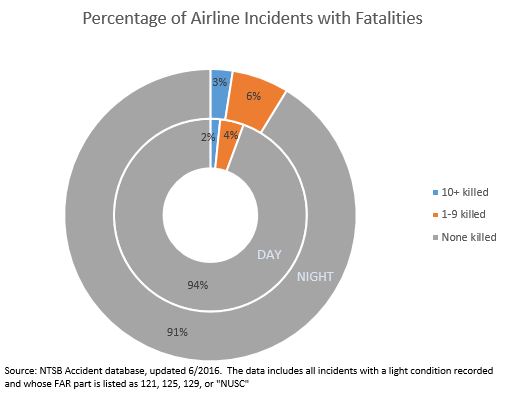I’ve travelled a lot with The CEO Magazine and one of the things I’ve always asked myself on countless flights is why on earth are the plane’s lights dimmed for take-off and landing? If the lights were on, surely it would be a good thing for planes to be more visible in the skies over cities when embarking upon, or finishing, the leg of the flight?
Or maybe it’s because the aviation bods don’t want to annoy all the locals who live around the airport’s vicinity? Mind you, the thought of congested airspace in and around cities brimming full of planes flying with their cabin lights up to normal brightness, and not being dimmed, would potentially look rather pretty. Which brings me onto another point – why are the blinds always forced to be open at the same time?
In our opinion, the real reason for both is to do with the threat – or chance – of an accident. According to Boeing statistical studies, 16% of fatal accidents occur during take-off and the initial climb, while 29% occur during the approach and landing.
The lights of a plane are dimmed because it actually helps your eyesight adjust to potential darkness if the plane is involved in an accident. If something happens or the power goes out – and you’re scrambling around in the dark (inside or out) or in a cabin full of smoke – it’s better that your eyesight is already used to being in darker surrounds as opposed to going from a fully lit cabin into sudden darkness. Makes sense really, especially as you have a 50% higher chance of being killed in an airline crash at night.

And raising the window shade during take-off and landing also forms part of the same survival strategy employed by probably every airline in the world. By having the blinds up, flight attendants – and passengers for that matter – are able to see potential hazards outside the plane to help make decisions on whether to evacuate or not.
Would you jump out of an exit of plane into a raging blaze of burning aviation fuel? Probably not. I’d hazard (excuse the pun) a guess that you’d look for an alternative emergency exit.
Leaving the blinds open also helps all those on board to remain better orientated and more aware of their surroundings in the event of an accident. It’s better to know where you are, which way is up, and exactly what’s happening than not; regardless of the dire circumstances.
And that ladies and gentlemen, is why the lights are always dimmed during take-off and landing, and why the blinds must remain open at the same time; it’s all about your safety.
But regardless of the above, airplane transportation remains the safest way to travel, and readers should rest assured that while flight attendants demand the blinds to be raised whilst the lights are dimmed, it’s all in your best interests of surviving a crash.
Happy travels!







